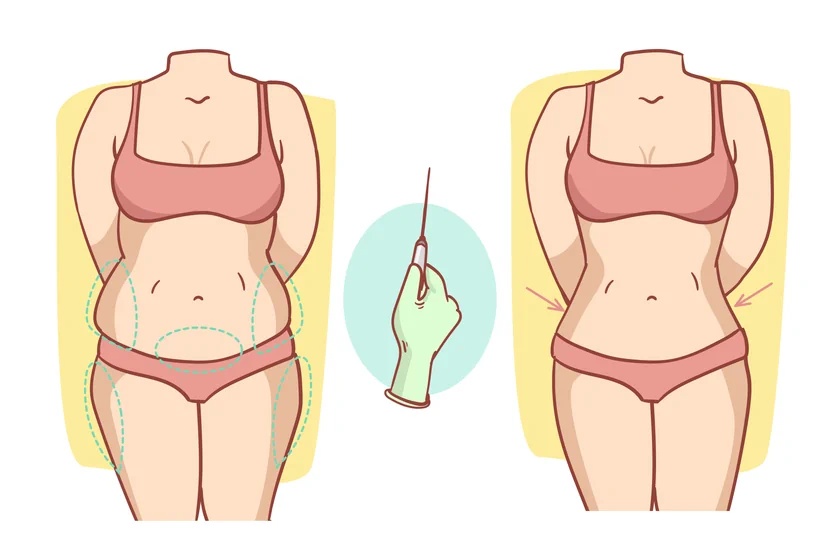Although liposuction is not a weight-loss solution, it is often used for body contouring. It helps reshape areas of the body by eliminating fat pockets that are resistant to lifestyle changes. People commonly seek liposuction when they are near their ideal weight but want a more toned or proportionate appearance.

This procedure has been practiced for decades and continues to evolve with advancements in technique and technology, offering safer and more precise results for patients.
Why Liposuction for Belly Fat Matters Today
Persistent Belly Fat Is a Common Concern
Belly fat is one of the most difficult areas to manage through exercise and diet alone. This type of fat, especially subcutaneous fat (the layer just beneath the skin), can be influenced by genetics, age, hormones, and lifestyle. For many individuals, no matter how healthy their habits are, abdominal fat may remain.
Liposuction offers a targeted solution, helping individuals achieve their desired body contour and boost their self-confidence. It can address:
Fat that resists diet and exercise
Post-pregnancy abdominal bulges
Localized fat from aging or hormonal changes
Who It Helps
Liposuction is most suitable for:
Adults in good general health
People close to their ideal body weight
Individuals with good skin elasticity
Those with realistic expectations
It is not intended for obesity treatment or as a substitute for healthy lifestyle choices. However, it can complement such efforts by refining results.
Psychological and Social Impact
Many patients report improved body image, posture, and physical comfort after the procedure. When performed responsibly, liposuction can contribute to emotional well-being, especially for those who have felt frustrated by their body shape despite their efforts.
Recent Trends and Updates
The last year has seen several developments in liposuction technology and practice, improving safety and outcomes.
Advanced Techniques
Laser-Assisted Liposuction (LAL) and Ultrasound-Assisted Liposuction (UAL) have become increasingly common. These techniques break down fat cells before removal, reducing trauma and recovery time.
Tumescent Liposuction remains a popular method, involving the injection of a fluid that minimizes bleeding and eases fat removal.
Focus on Recovery and Non-Invasive Alternatives
Surgeons are now placing greater emphasis on enhanced recovery protocols, including better pain control, shorter downtime, and personalized post-op care.
The rise of non-invasive body contouring methods (like CoolSculpting) has not replaced liposuction but has provided patients with more choices depending on their needs and body type.
Global Popularity
Liposuction remained one of the top five cosmetic procedures worldwide in 2024, according to data from the International Society of Aesthetic Plastic Surgery (ISAPS). In particular, abdominal liposuction is among the most requested body areas for contouring.
Legal and Regulatory Considerations
Liposuction is regulated differently across countries, and safety standards are enforced by national medical boards and health ministries.
Regulatory Guidelines
In countries like the United States, liposuction is governed by the Food and Drug Administration (FDA) and state medical boards. Only board-certified plastic surgeons or dermatologic surgeons are allowed to perform the procedure. Similar standards exist in Canada, the UK, Australia, and India.
Limitations and Restrictions
Fat Removal Limitations: In many jurisdictions, surgeons are advised not to remove more than 5 liters of fat during a single session for safety reasons.
Facility Accreditation: Liposuction must be performed in accredited surgical centers or hospitals. Clinics that fail to meet these standards may be penalized.
Informed Consent Requirements: Patients must be provided with detailed information about the risks, benefits, costs, and expected outcomes before surgery.
Medical Tourism Considerations
Some patients seek liposuction abroad for lower prices. While cost-saving may be a factor, not all destinations adhere to the same regulatory and hygiene standards. It is crucial to research accreditation, credentials, and patient reviews before undergoing surgery in another country.
Tools and Resources for Planning Liposuction
Several resources are available to help individuals explore and prepare for abdominal liposuction.
Online Tools
Liposuction Cost Calculator (available on sites like RealSelf or Healthline): Helps estimate costs based on region, provider, and procedure type.
BMI and Body Fat Calculators: Useful for determining whether you're a good candidate.
Procedure Simulation Apps (e.g., ModYourBod): Offer digital previews of expected body changes.
Informational Websites
American Society of Plastic Surgeons (ASPS) – www.plasticsurgery.org: Offers detailed, doctor-reviewed guides.
British Association of Aesthetic Plastic Surgeons (BAAPS) – www.baaps.org.uk
National Health Service (NHS UK) – www.nhs.uk: Provides public information on cosmetic procedures including risks and recovery.
Surgeon Directories
RealSelf – Patient reviews and before/after photos.
DocFinder – Lists certified surgeons by country or state.
Smart Beauty Guide – Helps find ASAPS-certified surgeons globally.
Post-Surgery Support
Mobile apps for recovery tracking and reminders
Online communities and forums for post-op experiences
Clinic-provided guides on diet, movement, and follow-up care
Frequently Asked Questions
Is liposuction for belly fat permanent?
Liposuction permanently removes fat cells from the treated area. However, remaining fat cells can still expand with weight gain. Maintaining a healthy lifestyle is important to preserve results.
How long is the recovery period?
Initial recovery typically takes 1 to 2 weeks, during which swelling and bruising subside. Full results are usually visible in 1 to 3 months, depending on the method used and individual healing.
Is the procedure painful?
Liposuction is performed under anesthesia, so there is no pain during the procedure. Afterward, mild to moderate soreness, swelling, and bruising are common. Pain is usually managed with over-the-counter or prescribed medication.
Can liposuction treat visceral fat?
No. Liposuction only targets subcutaneous fat, which lies just beneath the skin. Visceral fat, located deeper around internal organs, cannot be removed surgically and must be reduced through diet and exercise.
What are the risks or side effects?
Common risks include:
Swelling and bruising
Temporary numbness
Irregular contours or asymmetry
Infection (rare if proper hygiene and care are followed)
Blood clots (very rare but serious)
Choosing a certified and experienced surgeon significantly reduces these risks.
Final Thoughts
Liposuction for belly fat is a medical procedure aimed at reshaping the body by removing stubborn fat deposits. It offers physical and psychological benefits for individuals who have realistic expectations and are committed to maintaining a healthy lifestyle.
This guide covers the essential information for anyone considering abdominal liposuction, including what the procedure involves, who it suits, recent medical advancements, legal considerations, and available tools for preparation and recovery.





